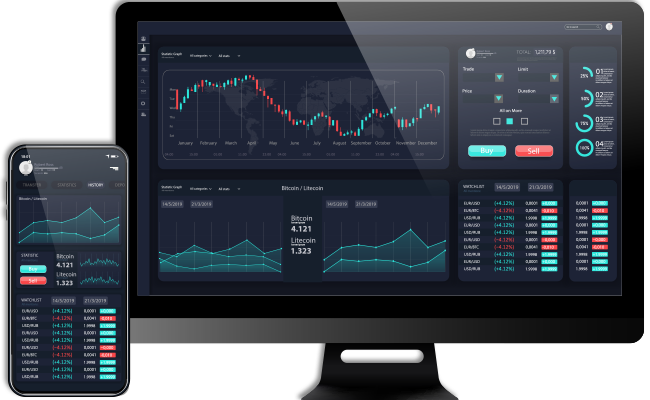
What is Cryptocurrency?
A cryptocurrency is essentially a form of virtual currency that acts as a medium of exchange. It is a digital asset that can be used for investments and payments. A cryptocurrency does not exist in physical or paper form (like money) and is not issued by centralised authorities, such as banks. Instead, it involves decentralised networks based on blockchain technology. This means that, theoretically, a cryptocurrency is free from government interference or federal manipulation. It uses encryption as a security tool to guard against fraud, enable secure transactions, and generate units of currency.
What is Cryptocurrency Trading?
Cryptocurrency trading involves the exchange of one cryptocurrency for another, the buying and selling of coins. Like forex, cryptocurrency trading involves the trading of currencies, but its exchange market operates 24/7 and does not form part of a regular stock exchange. It is a relatively new market and it can be – and has proven in the past to be – volatile and unpredictable.
Cryptocurrency exchange markets match buyers with sellers and, like a traditional stock exchange, traders can buy and sell through market orders or limit orders.
For traders to deposit, trade and withdraw cryptocurrency, a verified account and digital wallet are both required.

Types of Cryptocurrency
Cryptocurrencies have been on an upward trend over the past decade since they were first introduced. The number of different cryptocurrencies has increased dramatically in recent years, with the current total not fully known. However, latest estimates put the figure as around 5,000.
Cryptocurrencies can be categorised into three main types:
Bitcoin
Altcoins
Tokens
Bitcoin (BTC)
The original and most popular cryptocurrency was first created in 2009 in the wake of the housing market crash. It is an entirely digital phenomenon and its transactions are recorded in a distributed ledger, known as a blockchain.
The volume of the Bitcoin market is limited to 21 million tokens, as determined by its pseudonymous creator Satoshi Nakamoto. Bitcoin has been continuously traded since its launch, with zero downtime. Unlike forex, it can be traded 24 hours a day, 7 days per week.
In terms of its charted value over time, Bitcoin has been rather volatile. Its value spiked significantly in 2017, peaking at around $20,000 per coin. As of 2020, it is currently trading at around half that rate, fluctuating between $10,500 and $11,500.


Altcoins
Following the success of Bitcoin, a number of alternative cryptocurrencies, or ‘altcoins’ were launched. Similarly to Bitcoin, all altcoins have the ability to operate independently on their own networks, utilising ledger technology – the most popular one being blockchain.
Altcoins can be classified into more than one category, but some of the main types include mining-based cryptocurrencies and stablecoins. In terms of market capitalisation, Ethereum and Ripple were the largest altcoins as of October 2020.
Tokens

Cryptocurrency Trading Signals
Crypto trading signals can be broadly defined as trading advice given to traders on whether to buy or sell at a certain price or a particular time. These trading ideas or suggestions can be generated by variety of sources, from automatic signals produced by algorithms, bots and programs to manual analysis provided by other professional traders.

